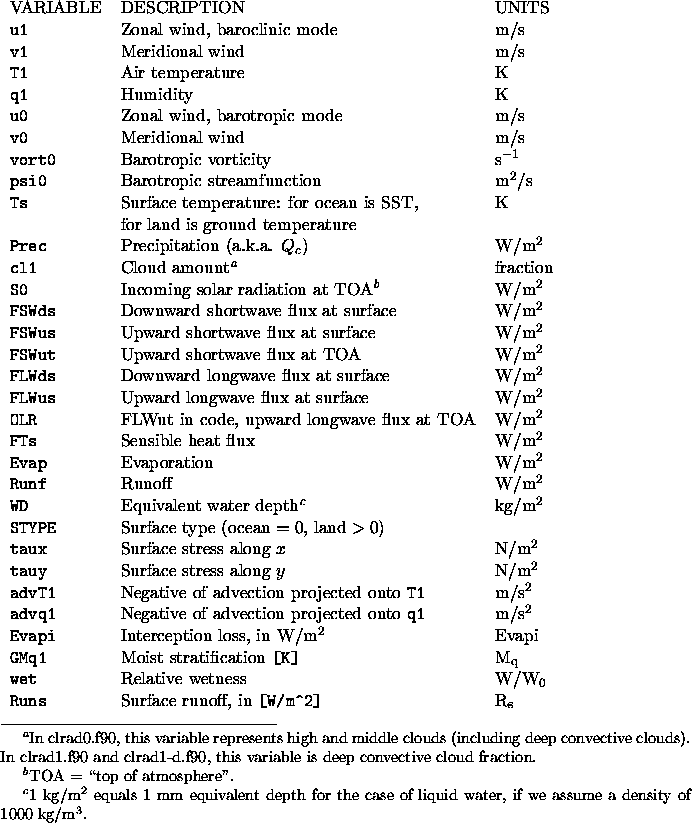



Next: GrADS descriptor file
Up: Content of Output
Previous: Content of Output
The default output format is sequential unformatted binary output. The binary
format is the native format of the machine. The variables are written so
that the data can be easily displayed and analyzed with GrADS (see http://grads.iges.org/grads).
The variables are written in the following manner:
- The time steps are written out in ascending order.
- At each time step, the entire spatial grid for each variable
is output to the file.
- Each spatial grid is written out in conventional FORTRAN
array format (with the first index written out in ascending
order, then the second index, and so on). Thus, the array
 for zonal wind (baroclinic mode) is written out in the following
order:
for zonal wind (baroclinic mode) is written out in the following
order:





Note that for the meridionally staggered variables that are
dimensioned in the y-direction from 0:ny, the
southern boundary (i,0) is not output. This is
because the value at the southern boundary is set to zero in
the model. See Section 3.3.1
for more details.
- When meridionally staggered variables are output,
QTCM1 simply writes the array. Grid interpretation is written
for the location of the
T grid points. QTCM1 does not
interpolate staggered variables to the T grid points (i,j).
Thus, if you wish to have the ``true'' value of the meridionally
staggered variables at (i,j), you will need to interpolate
accordingly or supply offset information in the plotting routine.
The plotting routines described in section (1.3.2) actually ignore
grid offset in plotting u,v. Some of these meridionally staggered
variables
include u1, v1, u0, and v0.
See Section 3.2.3 for more details. - The order of variable output is that given in the generated control
file.

Table 2.1: Standard output variables.
Note that some of the variable units given in Table 2.1
are ``non-conventional,'' i.e. they are in units different from those
in which they are usually found. For instance, precipitation is
usually given in mm/day; the model outputs the parameter in
 . A few conversion factors to more ``conventional''
units are given below (see the GrADS script
. A few conversion factors to more ``conventional''
units are given below (see the GrADS script qtcmpar.gs for more
conversion factors):

Note also that because output files are written in sequential access,
they have FORTRAN control words embedded in the records. Thus,
in order to properly read the output files, the sequential
option needs to be specified in GrADS, and the
/F77_UNFORMATTED keyword needs to be used in the IDL
OPEN procedure.




Next: GrADS descriptor file
Up: Content of Output
Previous: Content of Output
Climate Systems Interaction Group
Sun Aug 25 00:58:46 PDT 2002
![]()
![]()
![]()
![]()
![]()

